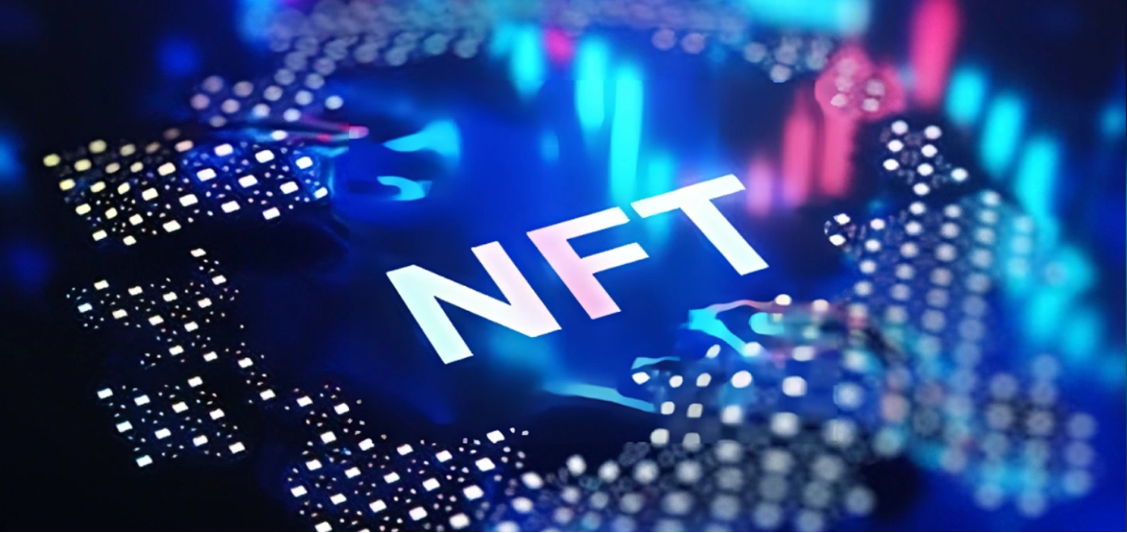
One article clarifies the fundamental differences between blockchain development and traditional development
With the continuous rise in the price of Bitcoin, blockchain applications are becoming increasingly diverse, and more and more developers are entering the blockchain technology field. However, blockchain development is fundamentally different from traditional development in many aspects, especially in terms of development concepts, technology stacks, and development processes. Now, let's take a look together.
I. Architecture Design: Distributed vs. Centralized
1. Traditional development: Centralized architecture
Traditional application development generally follows a centralized architecture, where all data and services are managed by a single central server or database. For instance, in the traditional banking system, all account information, transaction data and other related information are managed and stored by the bank's central database.
Under this architecture, the server is responsible for all business logic and data storage, and users can only rely on centralized institutions or service providers to verify and store data. During the development process, data consistency and redundant backup are usually controlled by the development team.
2. Blockchain Development: Decentralized Architecture
Unlike the traditional centralized architecture, blockchain development is based on a decentralized architecture. Blockchain is a distributed database system where data is stored on various nodes, and no centralized server can control the entire network. Each node can participate in verifying and recording transactions, and the data is distributed throughout the network to ensure decentralization, security and transparency.
The decentralized architecture of blockchain not only means there is no single controlling party, but also implies that each node in the system needs to follow the same rules to jointly maintain the security and stability of the system. Every transaction will be verified by a majority of nodes in the blockchain network, thus avoiding the risks of single point of failure and data tampering.
Ii. Data Storage and Management: Immutable vs. Tammutable
1. Traditional development: Tamper-proof database
In traditional development, data storage usually relies on relational databases (such as MySQL, PostgreSQL) or non-relational databases (such as MongoDB, Redis). These databases support CRUD (Add, Delete, Modify, Query) operations, and the data can be modified, deleted or updated as needed.
The management of traditional databases relies on database administrators and developers, who can modify the data in the database or delete certain records at any time. Although this flexibility is very useful in many cases, in some scenarios, it may also bring the risk of data loss, errors or tampering.
2. Blockchain Development: An immutable distributed ledger
One of the most prominent features of blockchain is its immutability. Once data is written into the blockchain, it cannot be modified or deleted. This is because blockchain employs powerful encryption technology and a chain structure, ensuring that once the data of each block is written, it is permanently recorded on the chain.
Each block contains the hash value of the previous block, forming an unalterable data chain. To tamper with one of the blocks, the hash values of all subsequent blocks must be recalculated, which is almost computationally impossible to achieve. Therefore, it ensures the transparency and integrity of the data.
This immutability gives blockchain an unparalleled advantage in scenarios with high requirements for data security, such as finance, auditing, and supply chain management.
Iii. Security: Methods of Trust and Verification
1. Traditional development: Trust Center and Authentication
In the traditional development process, data security and system integrity usually rely on trust centers. For instance, banking systems, enterprise applications, and e-commerce platforms all rely on third-party institutions for identity verification and transaction verification. These centralized systems rely on user identity authentication and permission control when ensuring security.
Traditional security technologies such as SSL/TLS encryption, user password verification, and permission management are all controlled through a trust center. Although these methods are highly effective in many application scenarios, their effectiveness is limited in a decentralized environment because there is no trusted single institution to verify users.
2. Blockchain Development: Consensus Mechanism and Trustless Verification
Blockchain replaces the traditional trust mechanism through a consensus mechanism. Nodes in a blockchain network verify transactions and data through consensus algorithms such as proof of work and proof of Stake, ensuring that each node in the network validates and acknowledges the data without relying on a centralized trust institution.
Through the consensus mechanism, blockchain has achieved a trustless verification process. Whether it is Bitcoin, Ethereum, or other blockchain platforms, they all ensure the validity of transactions and the security of the network through consensus algorithms. This enables blockchain to ensure the security and consistency of data even without a third-party trust institution.
Iv. Programming Languages and Development Tools
1. Traditional development: Diverse development tools and languages
In traditional development, developers can use various programming languages and tools to build application systems. For instance, commonly used languages for developing Web applications include HTML, CSS, JavaScript, PHP, Python, Ruby, etc. When developing desktop applications, languages such as Java, C#, and C++ may be used. Traditional development tools are diverse, and the ecosystems of various frameworks and libraries are very mature, which can greatly enhance development efficiency.
2. Blockchain Development: Specialized programming languages and tools
Blockchain development requires specific programming languages and tools. For smart contract platforms like Ethereum, Solidity is the most commonly used programming language, specifically designed for writing smart contracts. Blockchain developers also need to master the tools and frameworks for interacting with blockchain, such as Truffle, Hardhat, Brownie and other development tools, which can help developers write, deploy and test smart contracts.
In addition, due to the decentralized nature of blockchain, developers also need to understand how to interact with the blockchain network and how to communicate with blockchain nodes using libraries such as Web3.js and Ethers.js. The use of these tools and libraries is different from traditional development, requiring developers to have more knowledge related to blockchain.
V. Performance and Scalability: Transaction Speed and Processing Capacity
1. Traditional development: Centralized high-performance
Traditional application development usually confronts a single database server or computing node, so performance issues can often be resolved through hardware upgrades or load balancing. With the advancement of technology, modern traditional development architectures can support high concurrency and high-performance processing capabilities.
For instance, when traditional database systems handle a large number of requests, they can enhance performance by increasing the number of servers, optimizing query algorithms, and other means. Traditional Web applications can also enhance response speed and service stability through CDN acceleration and multi-node deployment.
2. Blockchain Development: Performance Bottlenecks of Decentralization
Due to its decentralized nature, the performance bottleneck of blockchain systems is usually more obvious than that of traditional systems. Each blockchain node needs to verify all transactions, which often leads to the throughput of blockchain systems being unable to match that of traditional database systems. For instance, Bitcoin can only handle approximately 7 transactions per second, while Ethereum's transaction processing speed is only 15 to 30 transactions per second.
To overcome these performance bottlenecks, blockchain developers must adopt innovative solutions, such as Layer 2 solutions (for example, Lightning Network, Rollups), to increase transaction speed and reduce costs. In addition, Sharding (sharding technology) is also a solution under exploration that can enhance the scalability and throughput of the blockchain.
Vi. Development Cycle and Deployment
1. Traditional development: Rapid deployment and iteration
The traditional development environment features a mature toolchain and development framework, enabling development teams to quickly build systems and enter the iterative stage. The deployment process of traditional applications is also relatively simple. After development is completed, the application only needs to be deployed to the server and related monitoring and operation and maintenance can be carried out.
2. Blockchain Development: Challenges in Deployment and Testing
The development cycle of blockchain applications is often quite long, mainly reflected in the writing and testing of smart contracts. Blockchain development not only involves application code, but also requires strict auditing and testing of the security, performance and stability of smart contracts.
Because blockchain is decentralized, the deployment process is more complex compared to traditional development. Once a smart contract is deployed on the chain, it cannot be modified. Therefore, during the development process, multiple rounds of strict testing and verification are required to ensure the security and compliance of the smart contract.
Conclusion
From the above analysis, we can see that blockchain development has significant differences from traditional development in many aspects. As a developer, if you want to engage in blockchain development, you need to constantly learn new technology stacks, understand the core concepts of blockchain, and master key technologies such as blockchain smart contracts and consensus mechanisms.
Although blockchain development currently faces more technical challenges compared to traditional development, it is precisely because of these challenges that blockchain technology also brings more opportunities for innovation to developers. With the development of blockchain technology and the improvement of its ecosystem, we believe that blockchain will become an important part of future technological transformation, bringing more innovation and opportunities to all industries.




